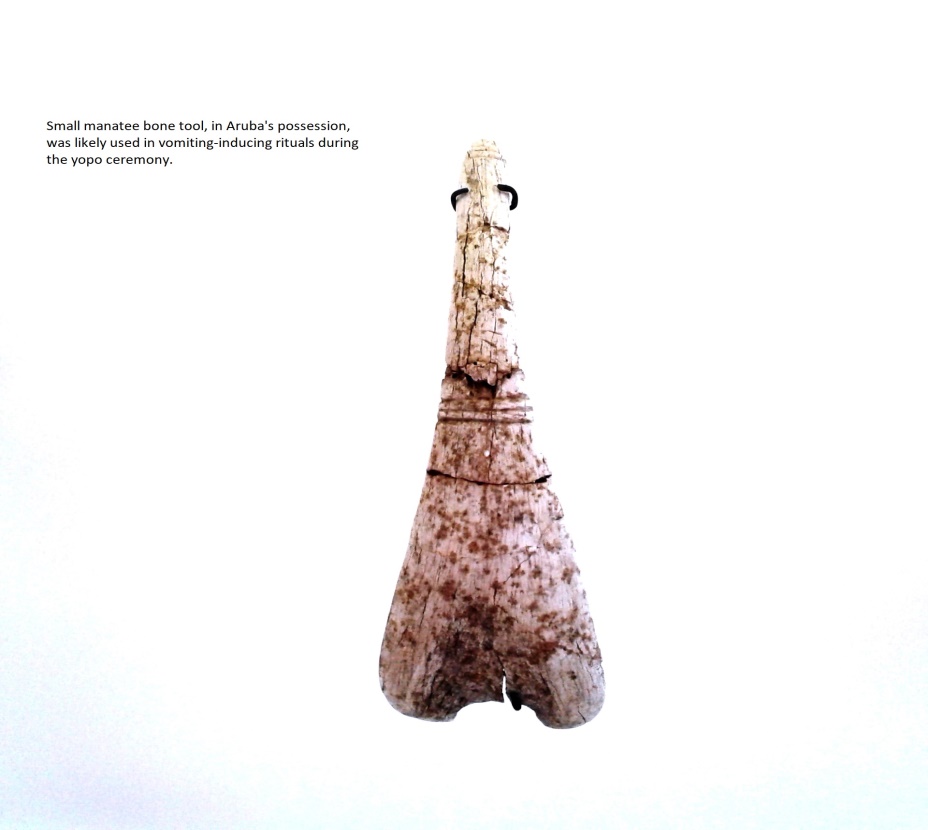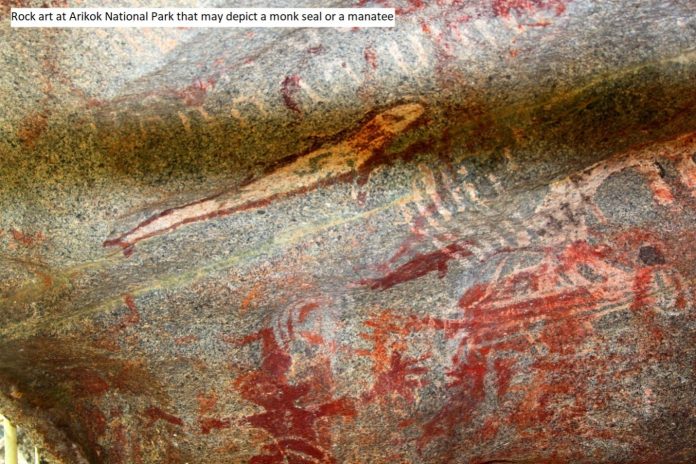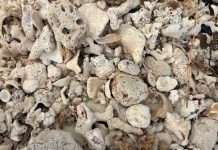Etnia Nativa’s narrative emphasizes the importance of reclaiming and recognizing Aruba’s cultural roots—often overshadowed by its colonial past. The platform promotes the rediscovery of native traditions, history, and identity.
In this episode, we discuss the use of marine mammal bones and their significance in prehistoric times. These animals were not only a source of food; their bones also served as valuable material for making tools, ornaments, weapons, and other objects. Today, we focus on one particular sea mammal: the manatee (Trichechus manatus), a large, herbivorous marine animal that was a vital resource for many prehistoric coastal communities.”

The manatee’s feeding behavior resembles that of a cow—it grazes on seagrass, which primarily grows in shallow coastal waters. Its closest living relative is the elephant, and due to its grazing habits and marine environment, the manatee is commonly known as the ‘sea cow.’
There are three main species of manatees: the Antillean or Caribbean manatee, the Amazonian manatee, and the African manatee. The Caribbean manatee once ranged along the Atlantic coastline from Virginia in North America to Brazil, with its primary habitat centered on the Caribbean Sea and the Gulf of Mexico. Interestingly, manatees do not tolerate warm water well and often migrate northward during the summer in search of cooler water temperatures.
Prehistoric tools made from manatee bones are relatively rare but highly significant—especially in regions where manatees were naturally present and could have interacted with early human populations. These tools offer valuable insights into the subsistence strategies, cultural practices, and resource use of prehistoric peoples.
Manatee bone tools have been found primarily in Florida and the broader southeastern United States. Most of these tools date to the Archaic and Woodland periods (approximately 8000 BCE to 1000 CE), though their use may have begun even earlier.
Manatee bones—particularly their dense ribs and long bones—were fashioned into tools such as axes and adzes (for chopping or woodworking), pestles or hammers (used for grinding or pounding), and scrapers or digging implements. Occasionally, ceremonial or symbolic items made from manatee bone suggest cultural or ritual significance.
Manatee bone is exceptionally dense, making it well-suited for heavy-duty tools. This density results from an aquatic adaptation: manatee bones lack marrow cavities, which helps them stay submerged.
Manatee bone tools are often found alongside shell middens and other marine-based subsistence remains. Their presence at archaeological sites also reflects prehistoric hunting practices—manatees were hunted not only for their meat but also for their hide and bones.
Today, manatees are protected under laws such as the U.S. Marine Mammal Protection Act. As a result, any use of manatee bones is strictly prohibited without special permits.
Aruba’s prehistoric inhabitants also used manatee bones to make tools. One such artifact in our possession is a small tool crafted from manatee bone, believed to be a sacred object used in ritual ceremonies—specifically to induce vomiting during the mind-altering yopo ceremony.

Yopo is a hallucinogenic substance still used by shamans in parts of South America. It is prepared from the seeds of plants that contain DMT, a powerful psychoactive compound. Inhaling even a small amount can induce a trance-like state known as hecura, a visionary experience that can last for several hours.
If you enjoyed reading our ancestral stories and are interested in learning more about the true identity of Arubans, we invite you to visit Etnia Nativa—the only ‘living museum’ of its kind in the Caribbean. Founded in 1994, Etnia Nativa has been a trendsetter and a co-founder of key cultural institutions such as Islands National Park, the Archaeological Museum of Aruba, and several artisan foundations, among other voluntary initiatives.Whats App+297 592 2702 etnianativa03@gmail.com
















